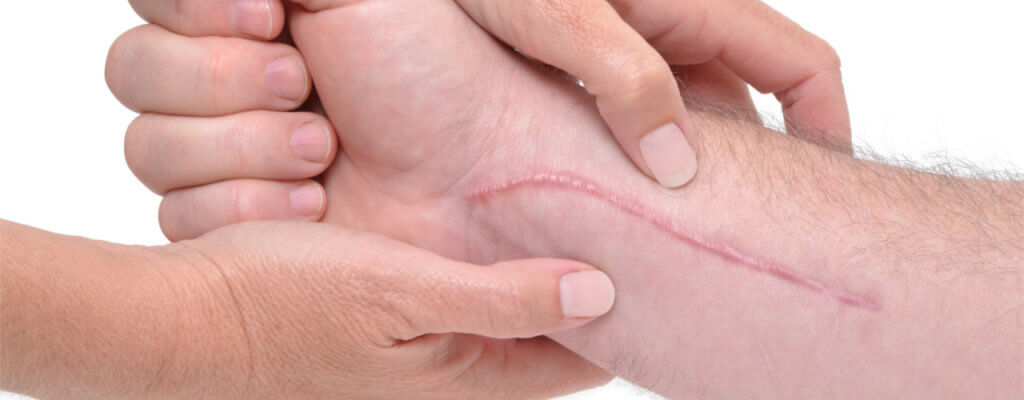The external appearance of a scar can be misleading, because it does not always indicate the extent of the underlying tissue damage. After injury, this tissue damage can disrupt fibrillar harmony. Our physiological mechanisms combat this trauma, and the wound is sealed quickly and efficiently through scarring.
Myofascial Release can be very helpful in managing and healing scars and adhesions. A common misconception is that adhesions are scar tissue. In reality, adhesions are an internal complication of scarring which is a result of a wound or surgical incision in the skin. Adhesions can also sometimes form in the presence of inflammatory disease or conditions such as complex regional pain syndrome. Adhesions differ from scars in that they are more susceptible to being changed, for instance through MFR.
Treating your scars and adhesions is very important. Scars can spread through the body like vines, creating soft tissue restrictions far from the visible scar itself. This leads to more symptoms, often misaligning joints, and disrupting the body’s proper alignment. MFR can help alleviate these symptoms which include pain, sensitivity, numbness, tingling, or dense buildup of tissue. It can also importantly reduce the tightness of scar tissue, allowing for restored movement and sensation, and decreasing the thickness of scar tissue.
In addition to reducing the tight restriction scar tissue imposes on your body, MFR can also improve the organization between the layers of tissue in the scar itself. While there are other therapies available for managing scars, MFR works deeper into the scar tissue well beyond the incision cite on the surface. This leads to less strain on your fascia overtime and can help to minimize its impact on your body.
** We don’t want you to wait any longer to start feeling better!




